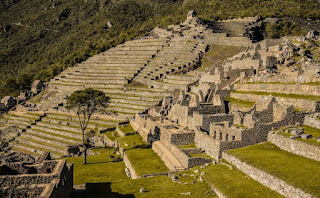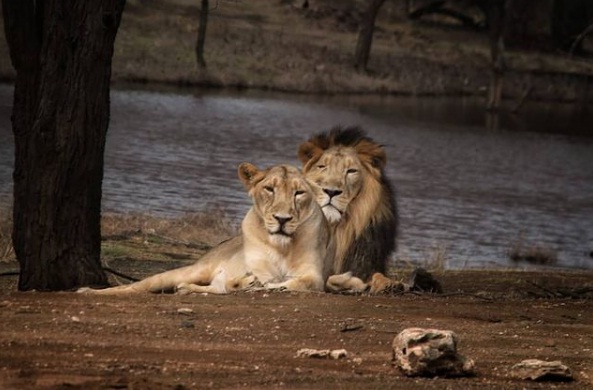Machu Picchu
The history of Machu Picchu is fascinating and shrouded in some mystery due to the lack of written records from the Inca civilization. However, based on archaeological evidence and research, here is a comprehensive overview of the history of Machu Picchu:
1. Inca Empire :
The Inca Empire was the largest empire in pre-Columbian America, and it thrived in the Andean region of South America from the early 15th century until the Spanish conquest in the 16th century. At its peak, the empire extended from present-day Colombia to Chile and Argentina, with its capital located in Cusco, Peru.
2. Construction of Machu Picchu :
Machu Picchu is believed to have been built in the mid-15th century, during the reign of the Inca emperor Pachacuti, who is credited with expanding the Inca Empire significantly and initiating ambitious building projects. The exact purpose of Machu Picchu remains a topic of debate among historians and archaeologists.
3. Possible Functions :
There are various theories about the purpose of Machu Picchu. Some believe it served as a royal estate for Pachacuti, while others suggest it could have been a religious sanctuary, a retreat for nobles, or even a ceremonial center linked to astronomical observations.
4. Architectural Brilliance :
5. Abandonment :
Machu Picchu was inhabited for only about a century. It is thought to have been abandoned by the Incas in the mid-16th century, likely due to the Spanish conquest and the upheaval that followed. However, the exact reasons for its abandonment remain uncertain.6. Rediscovery by Hiram Bingham :
In 1911, American historian and explorer Hiram Bingham led an expedition to the Andes Mountains in search of the lost Inca city of Vilcabamba. Instead, he stumbled upon Machu Picchu, which had been largely forgotten by the outside world and covered by dense vegetation. Bingham's expedition brought international attention to the site, leading to its eventual preservation and conservation efforts.7. UNESCO World Heritage Site :
Machu Picchu was designated as a UNESCO World Heritage Site in 1983, recognizing its cultural and historical significance as an exceptional example of Inca civilization and architecture.8. Modern Importance :
Today, Machu Picchu is one of the most iconic and visited archaeological sites in the world. Its stunning beauty, enigmatic history, and spiritual ambiance continue to captivate millions of tourists, making it an essential part of Peru's cultural heritage and an enduring symbol of Inca civilization. Efforts are ongoing to preserve and protect the site from the impacts of tourism and environmental factors to ensure that future generations can continue to experience this ancient wonder.-: Attractions :-
1. The Citadel of Machu Picchu :
The main attraction is, of course, the ancient Inca citadel itself. The impressive ruins are spread across a mountain ridge and include well-preserved temples, residential areas, plazas, agricultural terraces, and water channels. Exploring the stonework and architecture of this mystical site is a mesmerizing experience.2. Temple of the Sun :
A semi-circular temple dedicated to the Inca sun god, Inti. It features intricate stonework and is strategically aligned with the solstices, highlighting the Inca's advanced astronomical knowledge.
3. Intihuatana :
4. Huayna Picchu :
5. The Inca Bridge :
A remarkable engineering feat, the Inca Bridge is a stone path built into a sheer cliff face. It was likely used as a secret entrance or a defensive structure.6. Temple of the Condor :
This unique rock formation resembles a condor with outstretched wings, and it is thought to have had ceremonial and symbolic significance for the Incas.7. Sun Gate (Inti Punku) :
Situated on the Inca Trail, the Sun Gate served as the main entrance to Machu Picchu for travelers arriving on foot. It offers a stunning panoramic view of the citadel from a distance.8. Agricultural Terraces :
The Incas were skilled agriculturalists, and Machu Picchu features numerous well-constructed terraces used for farming crops like corn, potatoes, and quinoa.
9. Llamas and Alpacas :
10. Inca Trail :
While not technically part of the Machu Picchu complex, the Inca Trail leading to the citadel is an attraction in itself. The multi-day trek takes you through breathtaking Andean landscapes, ancient Inca ruins, and diverse ecosystems, providing a truly immersive experience.Remember that Machu Picchu is a UNESCO World Heritage Site, and visitors are encouraged to respect the rules and regulations to preserve the site for future generations. Exploring the magnificent ruins and soaking in the mystical atmosphere of Machu Picchu is an unforgettable journey back in time to the ancient Inca civilization.
-: Fact about Machu Picchu :-
One fascinating fact about Machu Picchu is that it is known as the "Lost City of the Incas." This title derives from the fact that the site remained hidden from the outside world for centuries until its rediscovery by Hiram Bingham in 1911.
Although Machu Picchu was not completely unknown to locals in the region, it had largely faded from memory and was not widely recognized or explored by the wider world. Covered in dense vegetation and perched high in the Andean mountains, the site's remote location contributed to its "lost" status.
Hiram Bingham's expedition brought international attention to Machu Picchu and unveiled its ancient wonders to the world. Since then, it has become one of the most celebrated archaeological sites, attracting millions of tourists annually who come to marvel at the ingenuity and beauty of this extraordinary Inca citadel. Despite being lost to history for centuries, Machu Picchu now stands as a symbol of the rich cultural heritage of the Inca civilization and a testament to their remarkable architectural achievements.





0 Comments